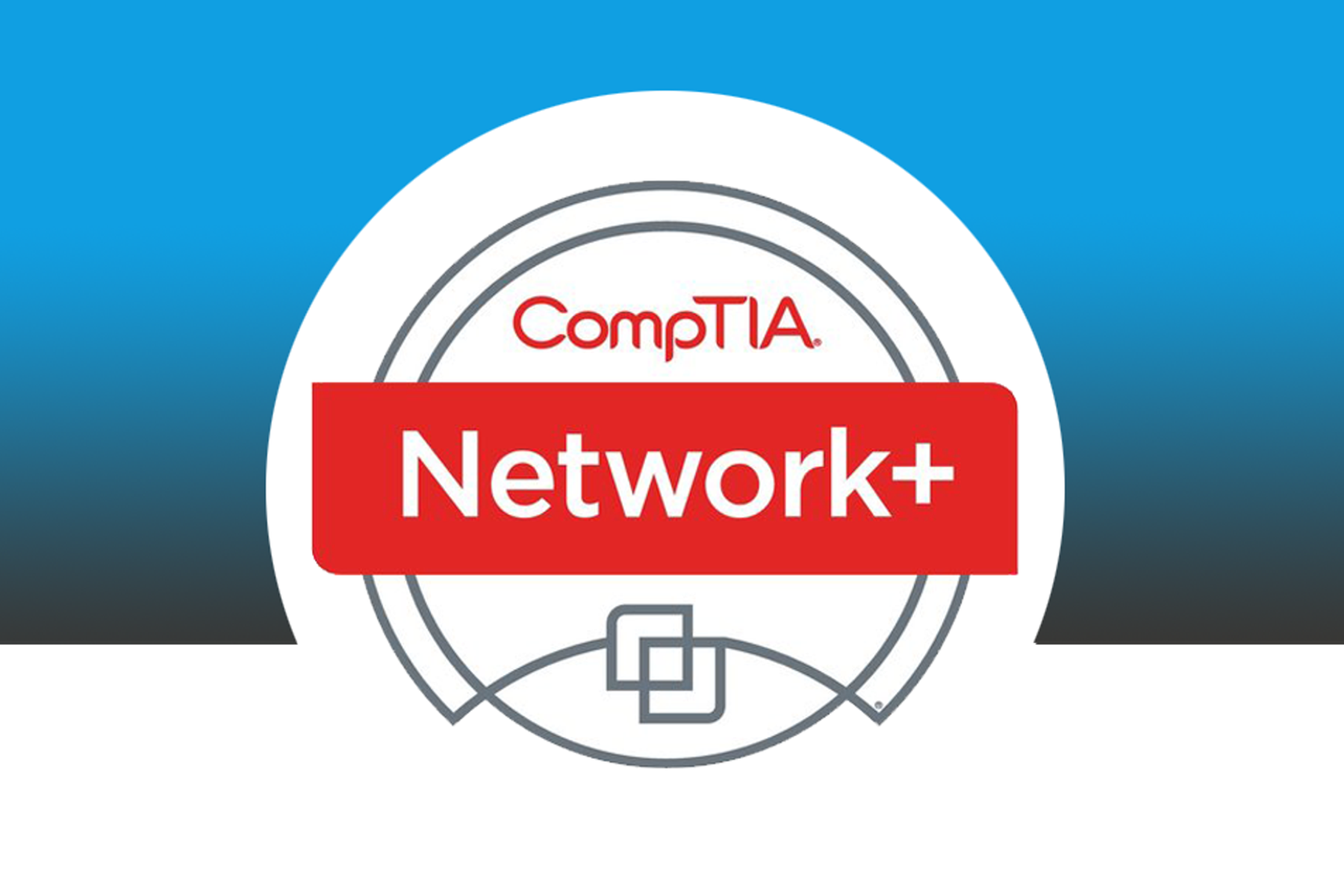Overview
- CompTIA Network+ validates the technical skills needed to securely establish, maintain and troubleshoot the essential networks that businesses rely
- Unlike other vendor-specific networking certifications, CompTIA Network+ prepares candidates to support networks on any platform. CompTIA Network+ is the only certification that covers the specific skills that network professionals need. Other certifications are so broad, they don’t cover the hands-on skills and precise knowledge needed in today’s networking
- CompTIA Network+ features flexible training options including self-paced learning, live online training, custom training and labs to advance the career development of IT professionals in network
Benefits
- In this course you will learn technical skills needed to securely establish, maintain and troubleshoot the essential networks that businesses rely
- The new CompTIA N+ (N10-008) vendor-neutral networking certification prepares candidates to support networks on any
- It provides the foundation you need to work on networks anytime and
- This CompTIA N+ course provides the necessary foundation to individuals about networking before venturing out to get trained in vendor-specific
- CompTIA Network+ is the only certification that covers the specific skills that network engineers need. Check out the dates below for the CompTIA Network+ certification training to enroll and take your career to greater heights.
The Main Topic of the Course
- Module 1: Comparing OSI Model Network Functions
- Module 2: Deploying Ethernet Cabling
- Module 3: Deploying Ethernet Switching
- Module 4: Troubleshooting Ethernet Networks
- Module 5: Explaining IPv4 Addressing
- Module 6: Supporting IPv4 and IPv6 Networks
- Module 7: Configuring and Troubleshooting Routers
- Module 8: Explaining Network Topologies and Types
- Module 9: Explaining Transport Layer Protocols
- Module 10: Explaining Network Services
- Module 11: Explaining Network Applications
- Module 12: Ensuring Network Availability
- Module 13: Explaining Common Security Concepts
- Module 14: Supporting and Troubleshooting Secure Networks
- Module 15: Deploying and Troubleshooting Wireless Networks
- Module 16: Comparing WAN Links and Remote Access Methods
- Module 17: Explaining Organizational and Physical Security Concepts
- Module 18: Explaining Disaster Recovery and High Availability Concepts
- Module 19: Applying Network Hardening Techniques
Learning Objectives of CompTIA N+ :
- After completing this course, you will be able to:
- Ports and Protocols and the OSI Model
- Routing, Switching, & IP Addressing
- Network Topologies & Technologies
- Cloud Concepts, Network Services, & Cabling Solutions
- Networking Devices
- Network Storage, Virtualization, & WAN Technologies
- Documentation and Diagrams & Business Continuity
- Network Monitoring & Remote Access Methods
- Policies and Best Practices
- Security Devices, Wireless Security, & Access Control
- Mitigation Techniques
- Troubleshooting Connectivity & Performance Issues
- Troubleshooting Common Network Service Issues
Course Requirements
- There are no specific prerequisites required to attend training Course
Exam requirements
- There are no specific prerequisites required to attend Exam
LAB Requirement
- It is recommended to have LAB in this course
Course Outlines and Training Plan
Module 1: Network fundamentals
- Compare and contrast the Open Systems Interconnection (OSI) model layers and encapsulation
- Explain the characteristics of network topologies and network
- Summarize the types of cables and connectors and explain which is the appropriate type for a solution
- Given a scenario, configure a subnet and use appropriate IP addressing
- Explain common ports and protocols, their application, and encrypted
- Explain the use and purpose of network
- Explain basic corporate and datacenter network
- Summarize cloud concepts and connectivity options.
Module 2: Network Security
- Compare and contrast various devices, their features, and their appropriate placement on the network
- Compare and contrast routing technologies and bandwidth management
- Given a scenario, configure and deploy common Ethernet switching features
- Given a scenario, install and configure the appropriate wireless standards and technologies
Module 3: Network Implementation
- Given a scenario, use the appropriate statistics and sensors to ensure network availability
- Explain the purpose of organizational documents and policies.
- Explain high availability and disaster recovery concepts and summarize which is the best solution.
Module 4: Network Troubleshooting
- Explain common security
- Compare and contrast common types of
- Given a scenario, apply network hardening
- Compare and contrast remote access methods and security
- Explain the importance of physical security.
Module 5: Network Operation
- Explain the network troubleshooting
- Given a scenario, troubleshoot common cable connectivity issues and select the appropriate
- Given a scenario, use the appropriate network software tools and
- Given a scenario, troubleshoot common wireless connectivity
- Given a scenario, troubleshoot general networking issues.






